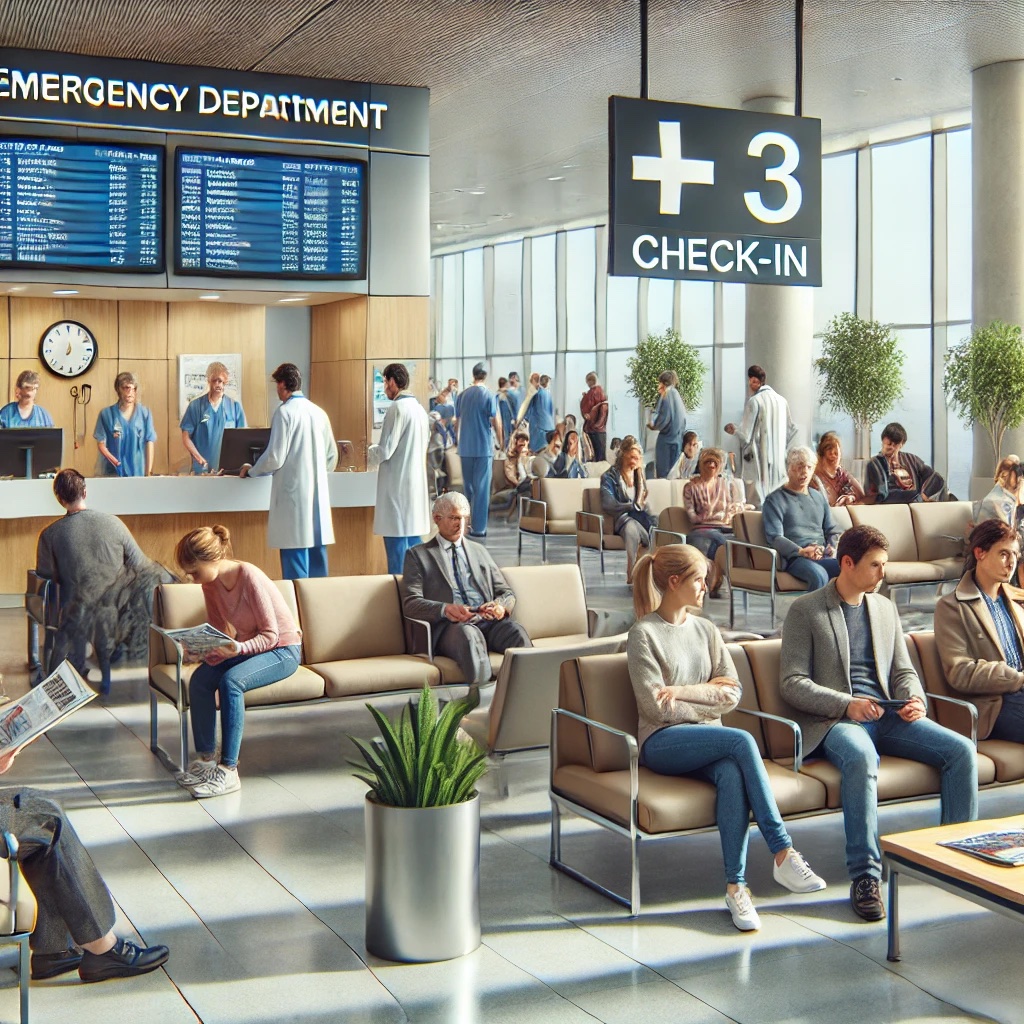Why am I waiting so long?
Understanding Waiting Times in Emergency Rooms
Emergency room (ER) waiting times can be frustratingly long. Several factors contribute to this issue, including overcrowding, room boarding, staffing shortages, and insurance problems.
Overcrowding is a significant issue in ERs, significantly impacting the patient experience. Many patients have no choice but to visit the ER for non-emergency problems, which increases the number of patients and makes it harder for staff to manage everyone quickly. True emergencies need immediate attention, which means non-urgent cases often wait longer.
Room Boarding occurs when there are no available hospital beds for admitted patients. These patients stay in the ER, taking up space and resources, which limits the ER’s ability to handle new patients efficiently.
Staffing Shortages also impact wait times. There are not always enough doctors, nurses, and support staff to meet demand. When staff is stretched thin, each patient waits longer for care. This problem worsens during flu season or local outbreaks.
Insurance Industry Issues play a significant role. Even private or publicly insured patients are sometimes forced to use the ER for primary care. They might not have access to regular doctors, adding to the patient load and causing longer waiting for everyone.
The tort industry also affects wait times. Fear of lawsuits drives doctors to order unnecessary tests. This practice, known as defensive medicine, aims to avoid legal trouble. However, it wastes time and resources. Patients wait longer for results and treatment because of this extra testing.
The combination of these factors creates a challenging environment in ERs. Overcrowding, room boarding, staffing shortages, and insurance problems are complex. The tort industry further complicates the situation by promoting unnecessary tests.
Isn’t the ER supposed to be fast?
Emergency rooms have to do everything right. Doing things right takes precedence over doing things on a timeline. Everything we do takes time, including ordering tests, interpreting tests, and documenting appropriately. An emergency room will typically focus on the single problem that brought you in. If you add more problems, your visit will take longer.
In summary, long waiting times in the ER result from several factors. Overcrowding, room boarding, staffing shortages, and insurance issues all play a part. The tort industry’s influence on unnecessary testing adds to the problem. By being aware of these issues, you can set realistic expectations and make informed decisions about using emergency services.
Copyright © 2025 William E. Franklin, DO, MBA
The information on this website (the “Site”) is for general informational purposes only. It is not a substitute for professional medical advice, diagnosis, or treatment. This disclaimer governs your use of the Site; by accessing and using the Site, you accept and agree to be bound by this disclaimer. If you disagree with this disclaimer, you should not use the Site.
No Medical Advice:
The content provided on the Site, including but not limited to text, graphics, images, videos, and other materials, is designed to offer general health and wellness information. It does not intend to provide medical advice about your condition or concerns. Always seek the advice of a qualified healthcare professional with any questions you may have regarding a medical condition. Never disregard professional medical advice or delay seeking it because of something you have read on this Site.
No Doctor-Patient Relationship:
Using this Site and transmitting information does not create a doctor-patient relationship between you and the Site’s owners, operators, or contributors. No recipient of information from this Site should act or refrain from acting based on any content included without seeking appropriate medical advice from a licensed professional.
Use at Your Discretion:
The Site is provided “as is,” and your use is at your own risk. While we strive to provide accurate and up-to-date information, we make no representations or warranties of any kind, express or implied, about the completeness, accuracy, reliability, suitability, or availability of the Site or the information, products, services, or related graphics contained on the Site for any purpose.
Third-Party Content and Links:
The Site may contain links to third-party websites or resources. These links are provided for your convenience and do not imply endorsement or recommendation of these third parties’ information, products, or services. We have no control over the content of linked sites. We are not responsible for any information, services, or products these sites provide. You access and use such third-party sites at your own risk.
Consult a Healthcare Professional:
If you have specific medical questions or concerns or require medical advice or treatment, please consult a qualified healthcare professional promptly. Never disregard professional medical advice or delay seeking it because of something you have read on this Site.
In summary, the information provided on this Site should not be considered medical advice and does not create a doctor-patient relationship. Your use of the Site is at your discretion, and you should always consult a qualified healthcare professional for personalized medical advice and treatment.
